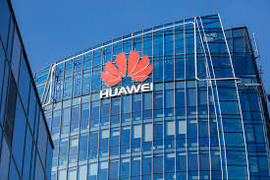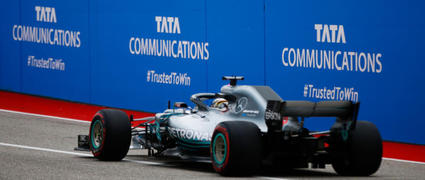The U.S. Army has used technology as its weapon for decades. Today technology plays a vital part in military success--from gathering top-secret information to manufacturing efficient arms.
Many military technological applications need broadband service to operate, such as radio communication, video surveillance, and security. The military must ensure that its communications infrastructure can operate in a large coverage area--such as a battlefield--and is efficiently communicative among its soldiers. However, finding the right technology was a challenge.
The Army attempted to deal with this issue by developing the Joint Tactical Radio System (JTRS), a program for a family of software-programmable tactical radios that would provide soldiers with voice, data and video communications as well as interoperability across the battle space. The JTRS would need to use a network of wide bandwidth that would also be compatible with the existing waveforms in use by the Department of Defense. The army began testing the $6.8 billion JTRS program in June 2003, but the project was set back by several financial obstacles and failed to carry through.
Then in December 2006,
Motorola began producing the MicroTCA. The
MicroTCA provides a scalable, low-cost network-centric paradigm for effective connectivity between soldiers. In addition, the MicroTCA is ruggedized in order to cope with the harsh climate of the battlefield. In October 2006, Motorola, Intel, and Hybricon developed a ruggedized MicroTCA-based WiMAX demonstration platform at MILCOM, an international conference for military communications. Combined, the MicroTCA and WiMAX network offered open standards-based subsystems on many different mobile platforms integrated into a high-performance network, physically fit for a military environment.
In April 2007, the US Army's Communications Electronics Research and Development Engineering Center (CERDEC)
evaluated Mobile WiMAX off-the-shelf products for possible military use, and the WiMAX MicroTCA proved to be a very likely candidate. CERDEC also evaluated Samsung's commercial WiMAX products, yet details of the trial were not disclosed. In June 2008, the Defense Information Systems Agency (DISA) chose
Alcatel-Lucent to provide a turnkey WiMAX radio access network that included a WiMAX base station, WiMAX Access Controller, and WiMAX Operation and Maintenance Center that supported the latest WiMAX standard, 802.16e-2005. The equipment had passed examination by the Joint Capabilities Technology Demonstration (JCTD), which focuses on testing the usefulness of a hybrid communications architecture that uses standards-based, COTS, satellite communications and wireless technology to extend global, wideband communications in a mobile environment.
WiMAX has played a part in military developments besides for strictly communications infrastructure. In January 2006, NASA drafted a
proposal for the WiMAX Networked UAV Telemetry System (WNUTS). Unmanned Aerial Vehicles (UAVs), otherwise known as drones, are military aircraft that pilots can control from a remote base station. Thousands of miles away from the battlefield, pilots sit at a video screen, viewing and attacking the enemy via a UAV that hovers unseen above. The WNUTS used a WiMAX network to support telemetry applications for UAVs, including visualizing real time UAV missions in 3D flight through animation, performing real time GPS data processing for direct remote sensing data geo-reference, and displaying selective inch-level high-resolution image contents. The WiMAX network was chosen for its flexible coverage, low cost, easy maintenance, and scalability.
Tags: Alcatel-Lucent, CERDEC, Intel, JTRS, MILCOM, MicroTCA, Motorola, NASA, Samsung, UAV, WNUTS, WiMAX, military
- Related Entries
- Day 2 Architecture and Standards - Jan 27, 2009
- New marketing message comes through loud and 'Clear' in Vegas - Jul 23, 2009
- Scenario Planning; If You Build It Will They Come? - Jul 06, 2009
- Nokia with an IA">Intel Finnishing it Connections, or, That's Nokia with an IA - Jun 25, 2009
- This is ARMless: Nokia & Intel - Jun 24, 2009
- A Billion Here, a Billion there... - Jan 21, 2009
- Clearwire Prepping Portable WiMax/Wi-Fi Router - Jan 12, 2009
- Waxing, Waning, WiMAX - Jan 12, 2009
- What does it say about Patents - Dec 22, 2008
- It's Clear and out of the Xohm! - Dec 02, 2008
TrackBacks |
Comments |
Tag with del.icio.us |
4g-wirelessevolution Home | Permalink:
Straight ShootersTags:
WiMAX,
military,
NASA,
WNUTS,
JTRS,
Motorola,
MicroTCA,
MILCOM,
Intel,
CERDEC,
Samsung,
Alcatel-Lucent,
UAV
Copyright
4g-wirelessevolution
















